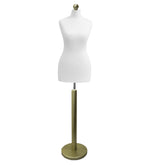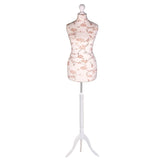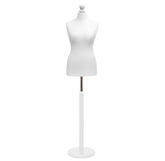Clothes Rail Heavy Duty: The Ultimate Guide for Heavy-Duty Hanging
When you think of a heavy duty clothes rail, you're talking about a completely different beast to the flimsy ones you might find in a typical high-street shop. These are built from industrial-grade steel, designed from the ground up to support serious weight without ever bending or breaking.
This makes them the go-to choice for both demanding home environments and busy commercial spaces. Whether you're hanging a collection of heavy winter coats or displaying an entire season's retail stock, a heavy-duty rail offers a truly reliable, long-term storage solution.
Why Flimsy Rails Fail and Heavy Duty Rails Prevail

We’ve all been there. That dreaded creak, the slow sag in the middle, and then the final, catastrophic collapse of a standard clothes rail under the weight of a few too many jackets. It’s a frustratingly common story, and it points to a basic flaw: most conventional rails just aren't designed for real-world use. Their weak materials and flimsy joints are a recipe for disaster, locking you into a cycle of replacement and clutter.
A heavy-duty clothes rail, on the other hand, is engineered for resilience. It’s not just about cramming more on; it's about providing a solid, dependable structure that will stand strong for years. Think of it as the difference between a temporary patch and a permanent foundation.
The Foundation of Strength
What gives a heavy-duty rail its edge? It all comes down to the materials and construction. These rails are typically forged from high-gauge steel or iron, materials specifically chosen for their incredible strength and durability. This robust frame is the secret to handling hefty loads without losing its shape.
This kind of strength is absolutely crucial in commercial settings. Consider that the UK's fashion and apparel market was valued at USD 58.4 million in 2024, and it's on a steady growth trajectory. As this market expands, so does the need for reliable display and storage that can keep up with the fast pace of retail. You can find more UK fashion market growth insights on imarcgroup.com.
Investing in a heavy duty rail is an investment in longevity and peace of mind. It eliminates the recurring cost and hassle of replacing inferior products, providing a secure foundation for your organisational system.
This focus on durability brings tangible benefits to any user, whether at home or in a professional space:
- Long-Term Reliability: A properly built heavy-duty rail is made to last, putting an end to common problems like bending, wobbling, or breaking.
- Greater Capacity: It can easily support the weight of heavy winter coats, multiple suits, or stacks of denim without showing any signs of strain.
- Versatile Applications: Its inherent strength makes it perfect for a huge range of uses, from home walk-in wardrobes and stockrooms to busy retail floors and even theatre costume departments.
Deconstructing a Truly Heavy Duty Clothes Rail
So, what really sets a standard clothes rail apart from a genuinely heavy-duty one? It’s not just marketing buzzwords; the difference is engineered right into its core components. Once you understand the anatomy of a proper rail, you can see past the sales pitch and accurately judge its real-world strength.
Think of it like the chassis of a car. A family hatchback uses lighter materials for fuel efficiency, but a lorry designed to haul serious tonnage relies on high-tensile steel for its immense strength. It’s exactly the same principle with a heavy-duty clothes rail—industrial-grade steel or iron isn't just a nice-to-have, it's essential for handling a proper load.
Material Matters Most
The choice of metal is, without a doubt, the biggest factor in determining a rail's strength. Cheaper options often use thin aluminium or flimsy alloys that start to bend and bow the moment you load them up. A true heavy-duty rail, on the other hand, is built from robust steel.
But it’s not just about the type of metal. The dimensions are just as important.
- Tube Diameter: A wider tube provides much greater structural integrity, preventing that dreaded sagging you see on inferior models.
- Wall Thickness: This is crucial. The thickness of the steel tube wall is directly linked to its ability to handle serious weight without buckling under pressure.
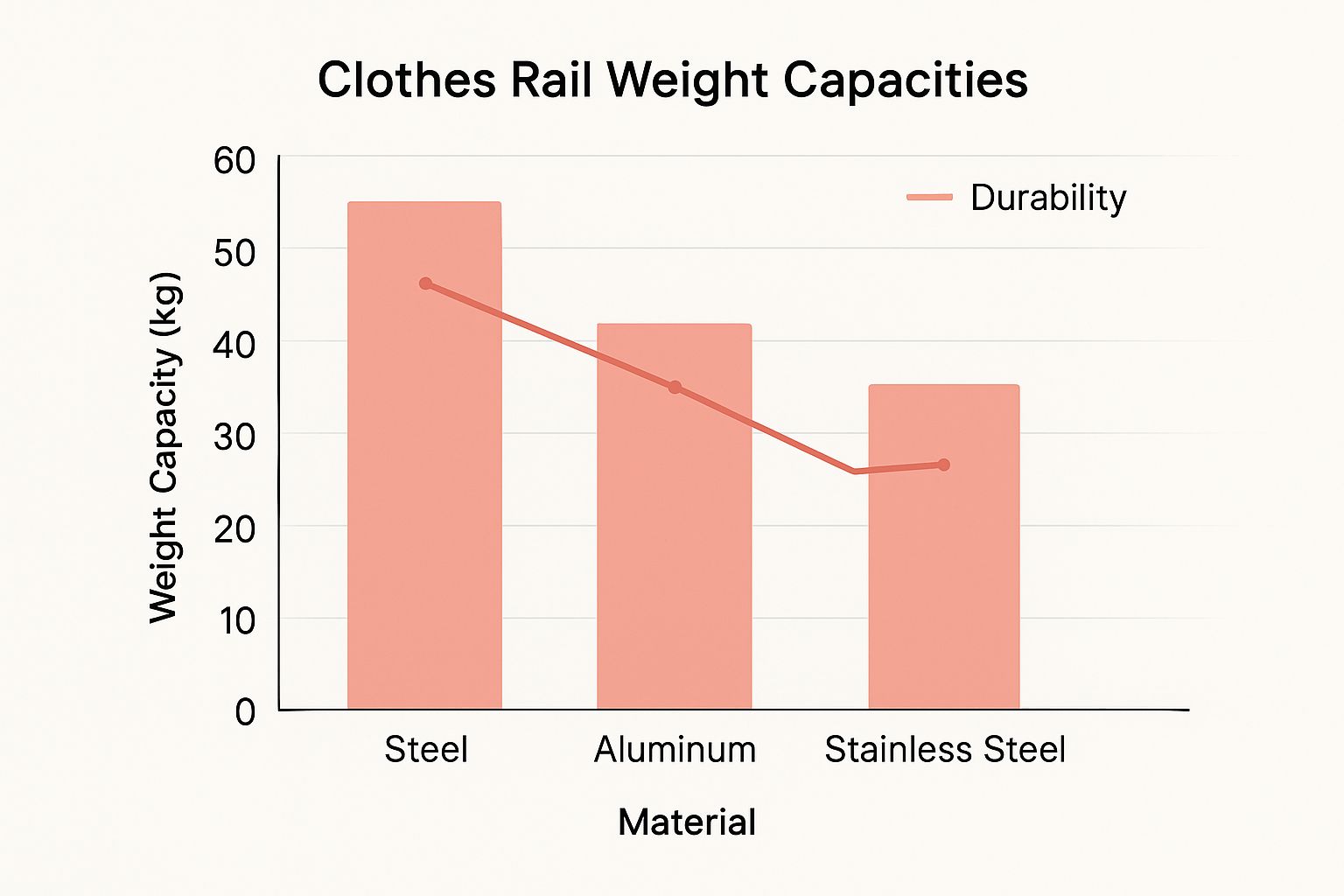
Comparing Rail Materials and Load Capacities
To put this into perspective, let's break down how different materials stack up in the real world. This quick comparison shows why certain metals are chosen for demanding jobs.
| Material Type | Typical Diameter | Average Load Capacity (kg) | Best Use Case |
|---|---|---|---|
| Industrial Steel | 32mm+ | 100kg - 150kg+ | Retail stockrooms, warehouses, home storage for heavy coats |
| Standard Steel | 25mm - 32mm | 60kg - 90kg | Pop-up shops, market stalls, general home wardrobe use |
| Aluminium | 19mm - 25mm | 15kg - 30kg | Lightweight laundry drying, temporary displays of light items |
| Plastic/Coated Wire | Variable | <15kg | Very light domestic use, children's clothes, not for heavy loads |
As you can see, industrial-grade steel is in a league of its own, offering the strength and reliability needed for professional and heavy-duty home applications.
Design and Finish: The Final Touches
Beyond the raw material, how the rail is designed and finished plays a huge part in its performance and longevity. Freestanding rails are fantastic for their flexibility, but only if they come with solid, lockable castors that won't buckle or seize up under a full load. For absolute, rock-solid stability, wall-mounted options are brilliant—as long as they’re properly fixed into a solid wall.
A protective finish is far more than just a lick of paint. It’s a shield, defending the rail against daily wear and tear to ensure its strength and appearance last for years.
A quality powder coating, for instance, provides a tough, resilient barrier against scratches, chips, and rust. This is vital in all sorts of environments, from a potentially damp stockroom to a busy shop floor. It’s this protective layer on a product like a heavy duty 6ft black steel garment rail that keeps it looking professional and performing perfectly over time. By looking closely at these core elements—material, construction, and finish—you can confidently spot a rail that's truly built to last.
How to Choose the Right Heavy-Duty Rail for Your Space
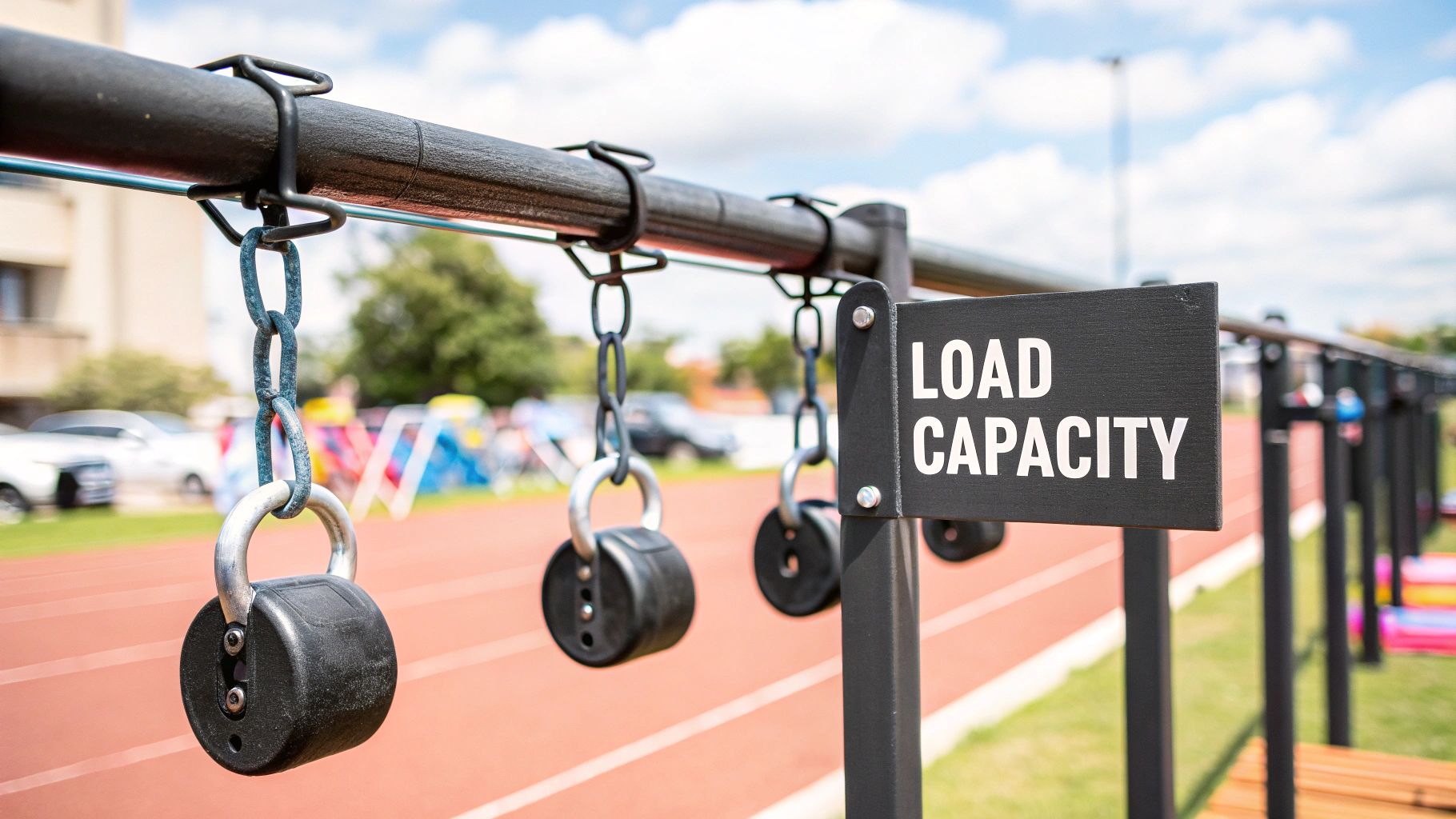
Choosing the perfect heavy-duty clothes rail isn’t just about picking one that looks strong; it’s about finding the right tool for the job. Before you even start looking at models, take a moment to think about what you actually need to hang. Are we talking about a mountain of heavy winter coats, or is this for a busy retail stockroom that needs to withstand constant use?
What you're hanging and where you're hanging it will guide every other decision. A rail for a home wardrobe has a very different job to one in a commercial setting, where it might be expected to hold hundreds of items day in, day out.
Assess Your Load and Your Space
First things first, get a rough idea of the total weight you'll be hanging. A single heavy wool coat can weigh around 2-3 kg, so a full collection can quickly become a serious load. A quick calculation here will give you the minimum weight capacity you should be looking for, preventing you from buying a rail that will buckle under the pressure.
Next, get out the tape measure. You need to know the exact width, depth, and height of the space where the rail will live. Crucially, don't forget to factor in the clothes themselves. They'll add significant bulk and need enough clearance from walls or other furniture to avoid snagging. If you're looking to turn your garage into a functional storage space, a heavy-duty rail can be a game-changer, and professional garage remodeling contractors can help you integrate it perfectly.
Your ideal rail should fit comfortably in your space without making it feel cramped. Always leave enough room to walk around it and get to your clothes—practicality is just as important as how much it can hold.
This planning stage is vital in a business environment. The UK’s apparel retail market is huge, hitting a revenue of £64.5 billion in 2023. For any business in this sector, smart storage is directly linked to an efficient workflow, making the right rail a critical operational investment.
Matching Rail Type to Your Environment
Once you know your weight and space requirements, you can start exploring the different types of heavy-duty rails out there. Each style is built for a different purpose.
-
Freestanding Rails: These are the jacks-of-all-trades. Often set on sturdy, lockable wheels, they give you fantastic mobility. This makes them perfect for shop floors, market stalls, or even just for rearranging a room at home. Best of all, they require no installation.
-
Wall-Mounted Rails: If you're short on floor space, these are your best friend. They’re brilliant for small rooms, tight stockrooms, or walk-in wardrobes. Fixing them directly to the wall gives you incredible stability and a clean, minimalist aesthetic. Just remember, they're a permanent fixture and need a solid wall to be secure.
-
Multi-Tier Rails: Got high ceilings but limited floor space? A two-tier rail is a clever way to double your hanging capacity without taking up any more room. They're great for organising different items, like hanging shirts on the top rail and trousers below. A compact but sturdy model like a heavy-duty 3ft garment rail is an excellent choice for making the most of vertical space.
By thinking through your specific needs first, you can confidently pick a heavy-duty clothes rail that won't just do the job, but will be a reliable storage solution for years to come.
A Practical Guide to Safe Installation and Assembly
Even the best clothes rail heavy duty model is only as good as its assembly. A few extra minutes spent getting the installation right is the secret to unlocking its true strength, ensuring it can handle its maximum load safely and stand firm for years to come.
This isn't just about following instructions; it’s about transforming a set of metal parts into a genuinely robust storage solution. Let’s walk through the right way to do it, whether you've got a freestanding unit or a wall-mounted rail.
Assembling Freestanding Rails
Freestanding rails are generally simple to put together, but the goal here is absolute stability. Before you start, lay out every component and do a quick inventory. It’s a small step that prevents big headaches later.
The key to a rock-solid build is a tight connection at every single join. Most rails use a simple click-lock mechanism or come with an Allen key. As you fit the upright poles into the base and then attach the top bar, make sure each piece slots in perfectly before you tighten anything up. Even a tiny bit of wobble at the base will be magnified into a major sway once it's loaded with clothes.
For rails with castors, always attach them before you build the rest of the frame. Use a proper spanner to tighten the nuts until they are completely secure—this stops the wheels from buckling or working themselves loose under heavy weight.
Once it's built, give it a firm but gentle shake. Any sway or rattle means you need to go back and retighten every connection. It’s that final check that makes all the difference. A well-assembled unit, like this heavy duty 5ft garment rail, should feel like a single, solid piece of furniture.
Installing Wall-Mounted Rails
Wall-mounted rails are fantastic for stability, but their strength is completely dependent on your wall and how you fix them to it. The rail itself is only half the equation; getting a secure fit relies on using the right technique and high-quality fasteners.
First thing's first: you need to know what your wall is made of.
- Masonry (Brick or Block): This is the gold standard for a secure fix. A hammer drill and the right wall plugs will give you an anchor that won't budge.
- Plasterboard: This one requires real care. You should never mount a heavy-duty rail directly onto plasterboard alone; it simply won't hold. The only safe way is to find the wooden studs behind the board and screw your brackets directly into that solid timber.
Grab a spirit level to get the rail perfectly horizontal. It might seem like a small detail, but a wonky rail doesn't just look bad—it causes all your hangers to slide to one end, creating a single point of stress that could strain the fixings. Mark your drill holes, measure everything twice, and then you’re ready to install.
Customising Your Rail for Maximum Storage

A heavy-duty clothes rail is much more than just a steel bar on wheels; it's the foundation for a brilliant storage system. The trick is to stop seeing it as a simple rack and start treating it as a versatile, adaptable tool for getting organised.
With a little thought, you can transform a standard rail into a multi-functional storage hub that’s kitted out perfectly for your needs, whether at home or in a busy stockroom. It’s all about adding the right accessories and integrating it smartly into your space.
Expanding Your Hanging Space
The quickest win for getting more out of your rail is adding accessories that create new ways to store things. These add-ons are designed to work seamlessly with the strong frame, letting you divide and expand your storage without making the rail wobbly or unstable.
- Rail Dividers: These are incredibly simple clips that slide onto the bar, letting you create neat, defined sections. Perfect for separating your work clothes from your weekend wear, or for organising stock by size or colour in a shop.
- Add-On Shelves: Many rails are designed to work with clip-on shelves that can sit either above the top bar or on the base. This is an ideal spot for shoe boxes, folded knitwear, or storage baskets.
- Extension Bars: If you need more hanging room, height extenders can lift the main rail, creating space for longer items or even a second, lower bar. You can also find side extension arms, which are great for hanging scarves, belts, or bags.
Think of your rail as a modular building block. Each accessory you add is another piece of the puzzle, helping you build a bespoke storage solution that uses every last inch of space effectively.
DIY Customisation and Commercial Integration
If you’re the hands-on type, a heavy-duty rail is a fantastic starting point for a custom project. Its tough steel frame can easily be painted to match your bedroom décor or your shop's branding, giving it an instant visual upgrade. You could even build a custom wooden base or a solid top shelf to give it the feel of a more permanent, high-end piece of furniture.
In a commercial setting, this adaptability is a game-changer. Rails are becoming key design features in modern retail, not just background hardware. This mindset allows a single heavy-duty clothes rail, like a versatile double-tier garment rail, to fit into a much larger, cohesive visual merchandising plan.
While our focus is on rails, it’s worth seeing how they fit into the bigger picture. For a wider view on how professionals manage space, exploring broader storage partitioning systems can offer some valuable insights. Ultimately, this turns your rail from a standalone item into a fully integrated part of your environment.
Common Questions About Heavy Duty Clothes Rails
When you're ready to invest in a proper storage solution, it’s only natural to have a few questions. A clothes rail heavy duty model is a serious piece of kit, a world away from the flimsy options you find in high-street catalogues, so getting the details right is key.
Here, we'll walk through the most common queries we get from customers. Think of it as a cheat sheet to help you choose the right rail and use it safely, covering everything from real-world weight limits to mounting it on those tricky modern walls.
How Much Weight Can a Heavy Duty Rail Really Hold?
This is always the first question, and for good reason. A well-built, industrial-grade steel rail can typically handle a load between 100kg and 150kg without breaking a sweat. Some of the real monsters of the rail world are even rated for loads north of 200kg, which is enough for hundreds of heavy coats or denim pieces.
But here's the crucial bit, especially for wall-mounted rails: the rail is only as strong as what it's attached to. You could have the toughest rail on the market, but if it's secured to a weak wall with flimsy fixings, it's destined to fail. The wall's integrity is just as important as the steel itself.
Can I Install a Rail on a Plasterboard Wall?
Technically, yes—but you have to do it with absolute care and the right hardware. You must never screw a heavy-duty rail's brackets directly into the plasterboard sheet. It simply doesn't have the structural strength to hold a serious amount of weight and will eventually just rip out of the wall.
The only safe and reliable way is to find the timber studs running vertically behind the plasterboard. Use a stud finder to locate them, and then make sure your brackets are screwed firmly into that solid wood. If the studs aren't in the right place for your rail, a freestanding model is a much safer bet.
When it comes to a wall-mounted clothes rail heavy duty installation, fixing it to solid brick, blockwork, or wooden studs isn't just a suggestion—it's non-negotiable for safety. The fixing point will always be the weakest link in the chain.
How Do I Stop My Rail from Rusting?
The best way to fight rust is to prevent it from ever starting. Look for a rail that has a quality protective finish right out of the box. Most heavy-duty rails are treated to resist corrosion, which is essential whether it’s living in a slightly damp stockroom or a busy retail floor.
- Powder Coating: This is a fantastic finish. It creates a thick, tough, and completely sealed barrier that's brilliant at shrugging off moisture, knocks, and scratches.
- Chrome Plating: Chrome looks great and offers decent moisture resistance, but it can be more prone to scratching over the years compared to a robust powder-coated finish.
If you do spot any rust, tackle it straight away. A light sanding with fine-grit sandpaper, a quick clean, and a touch-up with a suitable metal paint will seal the steel and stop the rust in its tracks. You can find more advice on keeping your storage in top condition in our guide to optimising clothes rail storage.
At Display Guru, we specialise in tough, reliable garment rails built for professional environments and discerning homeowners. Take a look at our collection and find the perfect heavy-duty solution for your space at https://www.displayguru.co.uk.


